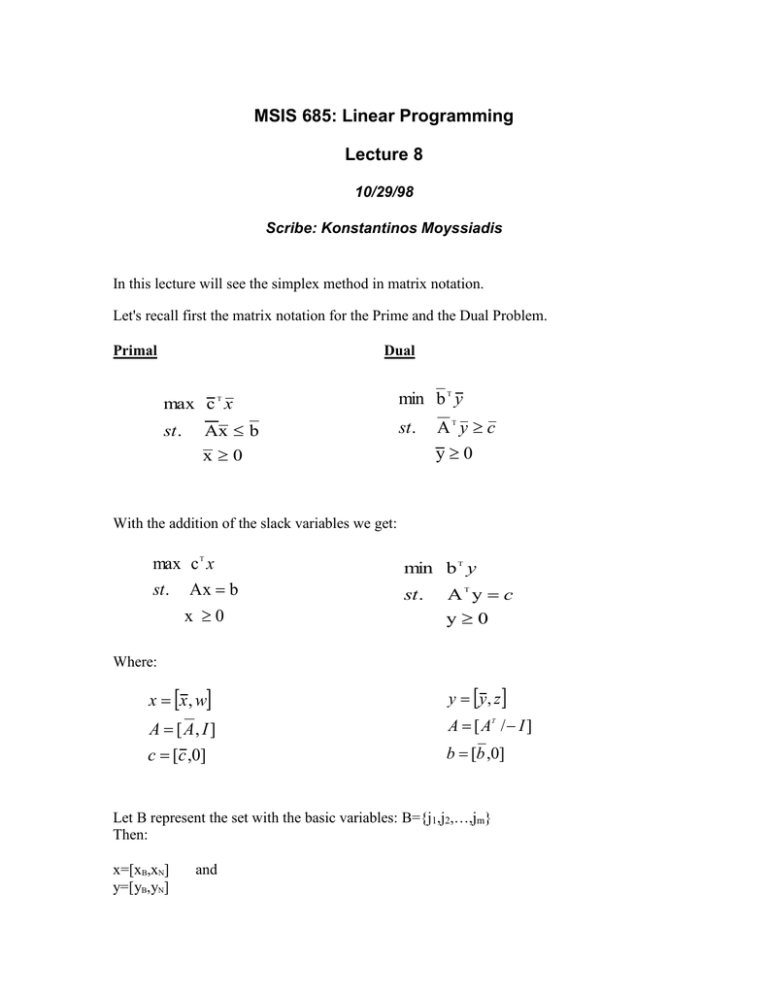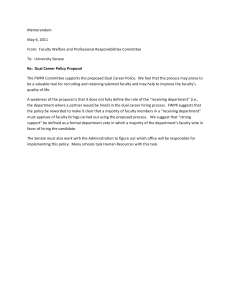MSIS 685: Linear Programming Lecture 8
advertisement

MSIS 685: Linear Programming
Lecture 8
10/29/98
Scribe: Konstantinos Moyssiadis
In this lecture will see the simplex method in matrix notation.
Let's recall first the matrix notation for the Prime and the Dual Problem.
Primal
Dual
max c T x
st .
Ax b
min b T y
st .
AT y c
y0
x0
With the addition of the slack variables we get:
max c T x
st . Ax b
x 0
min b T y
st .
AT y c
y0
Where:
x x , w
y y, z
A [ A, I ]
A [ AT / I ]
c [c ,0]
b [b ,0]
Let B represent the set with the basic variables: B={j1,j2,…,jm}
Then:
x=[xB,xN]
y=[yB,yN]
and
To solve the linear Prime Problem, we just follow the same steps but using the matrix
notation instead:
Ax=b
BxB+NxN=b
xB=B-1-B-1NxN
Hence, for the objective function:
ζ=cTx=cBTxB+cNTxN
=cBT(B-1b-B-1NxN)+cNTxN
=cBTB-1b-(cBTB-1N-cNT)xN
We secure feasibility when:
B-1b>0
and optimality when:
cBTB-1N-cNT > 0
Working similarly for the dual problem we get:
(yN is the basic dual matched with the xN prime non basic, and yB the non basic dual
matched with the xB prime basic)
yTA=cT
If we use the prime matrix, then for the dual matrix we get by converting the lines to
columns and negating:
c TB B 1b
1 T
(B N) c B c N
- (B -1 b) T
- (B -1 N) T
Therefore, for the objective function and the variables we have respectively:
ζ= c TB B 1b - (B -1 b) T
yN= (B 1 N) T c B c N - (B -1 N) T
To secure feasibility: (B 1 N) T c B c N 0
And optimality: B-1b>0




